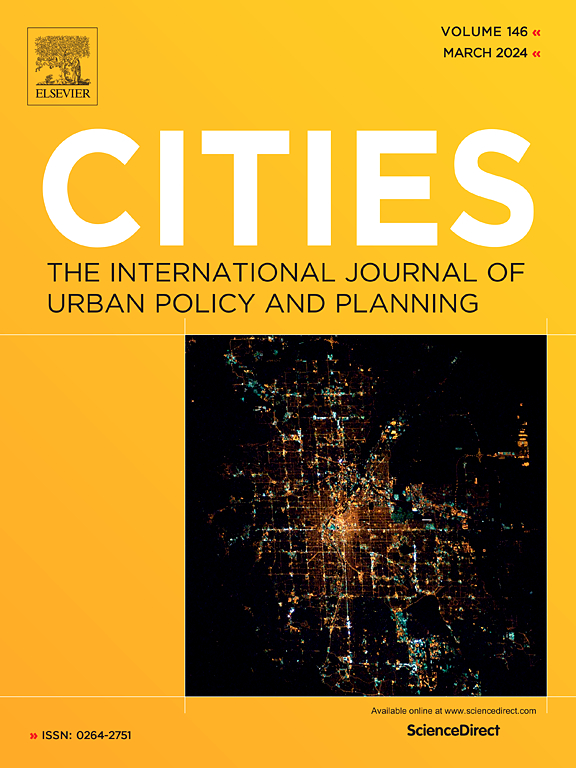Measuring urban physical environments using image deep features
IF 6.6
1区 经济学
Q1 URBAN STUDIES
引用次数: 0
Abstract
Effective and efficient representation of the urban physical environment is essential in urban studies. Street-level imagery, a prevalent data source for studying urban physical environments, provides detailed visual information about cityscapes. However, traditional methods typically rely on the audits of predefined semantic elements, which often oversimplify the urban environments. This study introduces a framework that applies image deep features to capture the complexity of urban physical environments, thereby inspiring solutions to urban problem. These deep features encode rich urban landscape semantics into a high-dimensional feature, capturing not only visual elements but also their detailed attributes and complex spatial interrelationships. We validate this approach through a case study on urban landscape cell identification, a task that demands an integrated understanding of urban visual elements and their spatial organization. By analyzing over 8 million street-level images from 36 Chinese cities, we demonstrate that these deep features effectively encode complex patterns and latent structural characteristics of urban environments, surpassing traditional methods. This work offers a novel perspective by introducing image deep features into urban studies, fundamentally enhancing urban understanding and providing a powerful foundation for future research and informed decision-making.
利用图像深度特征测量城市物理环境
在城市研究中,有效和高效地反映城市自然环境是必不可少的。街道级图像是研究城市物理环境的常用数据源,它提供了关于城市景观的详细视觉信息。然而,传统方法通常依赖于对预定义语义元素的审计,这通常会过度简化城市环境。本研究引入了一个应用图像深度特征来捕捉城市物理环境复杂性的框架,从而启发了城市问题的解决方案。这些深层特征将丰富的城市景观语义编码为高维特征,不仅捕捉视觉元素,还捕捉它们的详细属性和复杂的空间相互关系。我们通过城市景观细胞识别的案例研究验证了这一方法,这一任务需要对城市视觉元素及其空间组织进行综合理解。通过分析来自中国36个城市的800多万张街道图像,我们证明了这些深层特征有效地编码了城市环境的复杂模式和潜在结构特征,超越了传统方法。本研究通过将图像深层特征引入城市研究,提供了一个全新的视角,从根本上增强了对城市的理解,为未来的研究和明智的决策提供了强大的基础。
本文章由计算机程序翻译,如有差异,请以英文原文为准。
求助全文
约1分钟内获得全文
求助全文
来源期刊

Cities
URBAN STUDIES-
CiteScore
11.20
自引率
9.00%
发文量
517
期刊介绍:
Cities offers a comprehensive range of articles on all aspects of urban policy. It provides an international and interdisciplinary platform for the exchange of ideas and information between urban planners and policy makers from national and local government, non-government organizations, academia and consultancy. The primary aims of the journal are to analyse and assess past and present urban development and management as a reflection of effective, ineffective and non-existent planning policies; and the promotion of the implementation of appropriate urban policies in both the developed and the developing world.
 求助内容:
求助内容: 应助结果提醒方式:
应助结果提醒方式:


